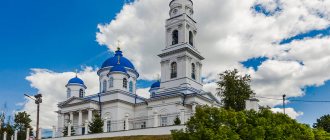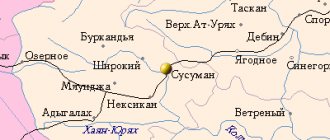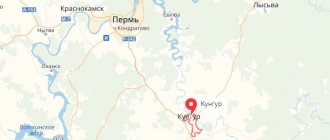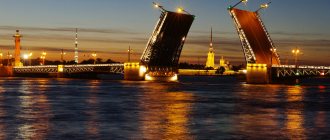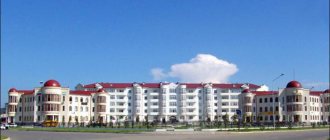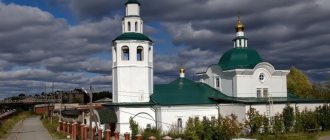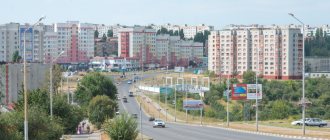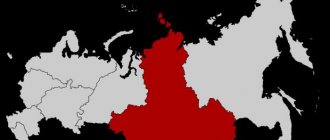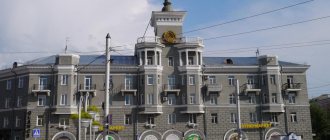People have settled in the lowlands of the Karelian Olonka River since ancient times. According to archaeologists, the first dwellings were built here back in the 2nd millennium BC. The name Olonets comes from the Finnish word alanko─ “lowland”.
These lands were in the possession of the Novgorod ruler for a long time. Wars with Sweden ruined the inhabitants until the Stolbovo Peace Treaty was signed in 1617. The agreement designated a border line 40 kilometers from the Olonets churchyard. Soon a border fortress was erected, the wall of which with 1300 loopholes stretched along the Olonka and Megrega rivers. The fortress had 19 towers, the highest being 32 meters. The fortifications were equipped with 31 cannons. The prison was larger and more powerful than Arkhangelsk.
In the mid-18th century, there was a fire at the fortifications, but restoration no longer made sense. Olonets became not only a military city, but also a trading city. Merchants from Olonets carried goods as far as Stockholm.
Olonets can become an interesting route point on the way to Petrozavodsk, Kizhi Island and other attractions of Lake Onega.
Peter the Great, preparing for the Northern War, built military shipyards and weapons factories here. After the war, the border moved further north, many factories closed, and Olonets became a typical Russian province. The visits of Peter the Great stirred him up somewhat; he repeatedly came for treatment at the local marcial waters.
Under Soviet rule, the city became part of the Autonomous Karelian Republic. During the Finnish War, Olonets was occupied and liberated only in 1944. The city still retains its 18th century layout.
Museum of Karelian-Livviks named after N.T.Prilukin
Address: Uritskogo st., 9 Phone: (81436) 2-13-31 Website: museum.ru/M1244 Opening hours: 10:00-17:00; Sunday: 11:00-15:00; Closed: Saturday Cost: adults: 30 rubles, schoolchildren: 20 rubles
An enthusiastic local historian, Prilukin devoted his entire life to collecting materials about the Livvik Karelians (Olonets Karelians). He managed to collect a large ethnographic collection of rare materials about the culture and life of this subethnic group, for example, items embroidered using the rare poimittu technique.
Based on the collection, the first local history museum in Karelia was opened in 1959. In addition to ethnography, there are other interesting exhibitions here, for example, an exhibition of old New Year's toys. There is a creative workshop teaching ancient Olonets weaving.
The museum occupies the house of the merchant Kuttuev, built in 1872 on the site of the chambers of the Olonetsky governor.
What to see
A remarkable fact for those who visit Olonets is that the sights that reflect the history of the city can be visited in one day.
- The Olonets National Museum of Livvik Karelians is located in the mansion of the merchant V.E. Kuttuev built in the 19th century. Here you can see authentic household items from different eras. The main exhibition tells about the history and culture of the Karelians. There is also a hall dedicated to Olonets.
- The current Cathedral of the Smolensk Icon of the Mother of God stands on the island of Mariam, which is surrounded by two rivers - Olonka and Megrega. The white stone temple of the first half of the 19th century is crowned with emerald-colored domes.
- Pedestrian wooden bridges - the hallmark of the city - are found in the central part, as well as in the surrounding villages.
- In the villages near Olonets there are several wonderful examples of northern temple art: • Assumption Church in the city cemetery; • Chapel of the Archangel Michael, Peter and Paul in the village of Novinka; • Temple of Florus and Laurus in the village of Megrega; • Church of the Holy Image of the Savior in the village of Eroyla.
- The city has several memorials dedicated to heroes who died during the wars of the last century: • monument to the unknown soldier; • a monument to soldiers-liberators in the form of a stele with an anti-tank gun; • mass grave of soldiers and partisans who died during the Second World War; • a memorial at the site of the mass grave of victims of the White Finnish intervention of 1919, as well as Red Army soldiers who died during the liberation of Karelia in 1944; • a monument to military pilots, which is an airplane wing on a concrete pedestal.
Cathedral of the Icon of the Mother of God of Smolensk
Address: st. 30th anniversary of the Victory (Mariam Island) Phone: 89119212084 Opening hours: 9:00-19:00
In the center of Olonets, the Megrenga River and the Olonka River formed a small island. Three bridges lead to it from different sides of the city.
On the picturesque island there is a stone temple, built in 1752 in the classicist style. The temple was built on the site of the wooden church of Hodegetria.
In 1819, Emperor Alexander the First arrived in Olonets. In his travels around Russia, Alexander never missed the opportunity to hold a service in a local church and pray for the well-being of the empire and his subjects. He also went to the Smolensk Cathedral in Olonets. By that time, many years had passed since construction, the temple had never been repaired and fell into disrepair. The emperor was shocked by what he saw and immediately donated a significant amount to repair the temple. The inhabitants of the city did not forget this, and after the death of the king, one of the local merchants managed to obtain a relic - the hearse on which the body of the emperor was transported. This hearse stood in the church until 1917.
The cathedral was closed after 1917. During the Finnish occupation, a Lutheran church was opened here, and in the 70s - a local history museum. Now restoration work has been completed in the church and services are taking place again.
The city of Olonets today
Nowadays, the city of Olonets is the administrative center of the Olonets national district, forming the Olonets urban district.
About 8 thousand people live here. Multi-storey residential buildings are located only in the central part, further from the center there is a low-rise private sector.
The city has a local history museum, an art gallery, a folk theater, a stadium, and an ice skating rink. I operate a dairy plant and a bakery. There are several farms in the vicinity of the city. There is a bus station in the city center, not far from Olonets there is the federal highway P-21 “Kola”.
Church of Frol and Laurus
Address: village Megrega How to get there: along the Petrozavodsk-Olonets highway. A visit must be arranged by calling the Smolensk Cathedral
A unique monument of wooden Novgorod architecture of the early 17th century. The church was built in memory of the war with the Lithuanians. Placed on a hill, it is visible from all sides: its head on an octagonal tent proudly rises among the trees. This is the oldest wooden building in Karelia.
After the victory over the Swedes, temples were erected throughout Rus' in memory of those killed. The Temple of Frol and Laurus was built on the way from Novgorod to the north. Travelers came here to pray for a safe end to their journey. Saints Frol and Laurus patronized agriculture, so the temple was also important for the surrounding peasants.
Inside there is a rarely seen tyablo iconostasis, giving an idea of what the decoration of Russian churches looked like before the 14th century. In the 19th century, the outside of the church was covered with stone. Services are held in the temple.
City Park
You can only find out why the park has become a symbol of the city by visiting it. In summer it is incredibly beautiful, surrounded by unique vegetation with more than 50 species of trees and shrubs, which are not often seen in Karelia. The park is more than 150 years old and on its territory there is a historical landmark - the Catherine School, dating back to 1900.
Assumption Church
Address: village Kunelitsy (territory of the city cemetery) Opening hours: 10:00-18:00
The temple was erected thanks to the efforts of Empress Catherine the First, who remembered the city where her husband often visited.
The only church that has always been active. This is the merit of the parishioners and especially Natalya Lobskaya, who in the sixties, during another wave of closures of existing churches, went to Moscow with a petition signed by city residents and defended the temple. Then she became a nun.
general description
The city of Olonets is located near the confluence of the Mergega and Olonka rivers, this area is called the Olonets Plain. The national composition is dominated by Karelians - this is a feature of the city, they account for 58%, Russians come in second place - 37%. The population is declining, the maximum was recorded in 1992 - 12,100 people.
The climate is mild, the average annual temperature is 3.3 degrees Celsius. The warmest month is July, the coldest month is January. The weather in the city of Olonets is influenced by Lake Ladoga. The absolute minimum is -54 degrees, the maximum is +36 degrees Celsius. The average annual precipitation is 620 mm, and it is fairly evenly distributed over all 12 months. The greatest amount of precipitation usually falls in August - during this month the weather in these parts is often rainy. The least amount of precipitation in the Olonets region is recorded in February and March.
Church of the Holy Cross Church of Ingria
Address: st. Svirskikh divisions, 12-a Telephone: (81436) 4-21-06 Website: https://cnacaem-uucyc.narod.ru/ Opening hours: 18:00-20:00 - constantly, during other hours according to the schedule of services and events.
A modern church, an example of a typical European Protestant church. This type of church is rare in Russia, especially in the provinces. It is especially interesting to see the differences in the architecture of Orthodox churches and Protestant churches.
Church of the Assumption of the Blessed Virgin Mary
The wooden five-domed Church of the Assumption of the Blessed Virgin Mary was built in 1788 on the site of the city cemetery during the reign of Tsarina Catherine the Great, who often visited Olonets. The main value of the temple was the iconostasis, preserved from the 18th century. In 1862, the church was rebuilt on the initiative and at the expense of merchant Vasily Kuznetsov in memory of his untimely deceased wife. The temple rose on a foundation, acquired three bells, and its façade was renovated with paneling. Throughout the 250 years of its existence, the church has not stopped services and has preserved all the valuable icons from other city churches that were persecuted.
Vazheozersky Monastery
Address: Interposelok village Telephone: (81436)2-43-18 Opening hours: 8:00-20:00 How to get there: from St. Petersburg from the bus station on the Obvodny Canal flight: St. Petersburg-Petrozavodsk to the turn to Interposelok, from where another 12 km; or from the Olonets bus station, route: Olonets - Interposelok.
In the 16th century, a monastery was founded by the monks Nikifor and Gennady near Vazhozero. The monks sought peace and solitude in the deep Olonets forests. But people came to them, disciples settled nearby, built hermitages and cells. This is how this monastery appeared.
The Monk Gennady was buried by his followers in the cave where he lived before the construction of the monastery. After his death, the monastery was built and expanded. The dense Karelian forests reliably sheltered her from the bustling outside world. Although the Poles reached here during the Time of Troubles and destroyed the monastery, it was rebuilt again. The events of 1917 did not escape these places. The monastery was closed, its premises were used either as a prisoner of war camp or as a psychiatric hospital.
Now the monastery is being restored, it has again been inhabited by monastic brethren. The relics of St. Gennady were miraculously preserved, as was the holy well. People still come here to venerate the shrines, ask for advice, and explore the ancient monastery.
Interesting Facts
More than half of the population of Olonets and the entire region are Livvik Karelians. Many of them speak their native language, and the signs and some signs here are duplicated in Karelian.
The city's coat of arms, which appeared in 1730, is one of the oldest in the country. A hand with a shield emerging from the clouds symbolizes earthly and divine protection. Two crossed nipples are the city’s contribution to the creation of Russia’s naval power: logging, shipbuilding, casting guns and shells.
Every year at the beginning of winter, the Olonets Santa Claus Games are held here - a fun festival that brings together winter wizards from different regions and countries.
Olonets fields
Karelia is famous for its unique nature, which attracts not only tourists, but also migratory birds.
More than 300 thousand geese fly through the Olonets fields from late April to early May. The sky above the city is filled with schools of birds, and the fields of Olonets turn into noisy goose markets. Historical monuments of church and secular architecture against the backdrop of picturesque natural landscapes, hospitable Karelians who make up the majority of the population with preserved national cultural traditions make Olonets attractive for tourists.
